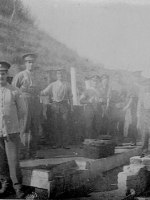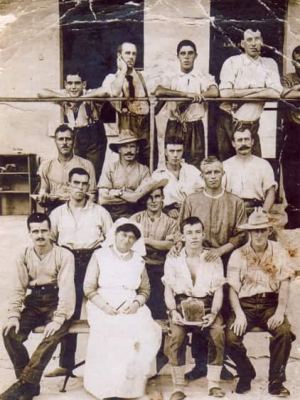
Welcome to the online home of the Salonika Campaign Society – a society dedicated to the memory of those of all nations who served in the campaign, fought in northern Greece, Serbia and Albania from 1915 to 1918.
In October 1915 the first British troops landed at the Greek port of Salonika (now Thessaloniki) from Gallipoli and France. The British Salonika Force (BSF) fought alongside French, Greek, Italian, Russian and Serbian contingents. British and French colonial troops from the Indian subcontinent, Africa, and Indochina also took part. Of a total allied force of around 600,000 men the BSF numbered 220,000 men at its peak strength. War Office reluctance to support the campaign led to a gradual decline in numbers and, until April 1917, the front was relatively quiet. The major effort came in September 1918 as part of all-encompassing allied offensives, which led to the end of hostilities with Bulgaria on 30 September 1918. As well as battle casualties, the force suffered severely from malaria, there being about 160,000 admissions to hospital in three years, almost equal to the fighting strength of the force. The health of many men was permanently ruined.
The Salonika Campaign Society was formed to promote interest in the Salonika Campaign, fought in northern Greece, Serbia and Albania from 1915 to 1918. The aim of the Society is to perpetuate the memory of those of all nations who served, whether they were members of the armed forces, medical services or civilian staff. The Society does not seek to glorify war and is neither politically nor commercially motivated. Application for membership is welcomed from anyone of like mind.
News
‘Salonika Secrets’ – a new podcast
In December of last year, we posted about a podcast series that featured an interview with Society member Chris Loader who had travelled with the Society on the September 2023 SCS Battlefield Tour…
Keep readingRibbit! Ribbit!
When I discovered that today is World Frog Day, I doubted that I could find any frogs with a Salonika connection. Then a memory stirred of a story read in The Mosquito -…
Keep readingRemembering Samuel Jenkins and 6/Royal Inniskilling Fusiliers
My thanks go to David Jenkins who – rather longer ago than I am prepared to admit – shared the story of his grandfather, along with some fascinating photos. Samuel Jenkins enlisted in…
Keep readingThe header images used in this site are from watercolours painted by William T Wood RWS in 1917 whilst an acting corporal in a balloon company (RFC), although he later became an official war artist. They depict Salonika, Doiran town and lake, ‘Pip Ridge’ (Doiran front), the Rupel Pass, and the Struma Valley. Forty of Wood’s paintings and drawings – including these in their entirety – illustrate ‘The Salonika Front’ by A J Mann MA, published by A & C Black Ltd of London in 1920.




